- Home
- Antonia Fraser
The Warrior Queens Page 18
The Warrior Queens Read online
Page 18
The Pope was already on his way to Germany, for a consultation with the German princes, including bishops, at Augsburg, when the dramatic news of the Emperor’s dash towards Italy across the Alps reached him. Such a journey from Rome to Germany – as the brutal events at Christmas 1075 will have made clear – could not have been made by the Pontiff without suitable armed escort, since Piedmont and Lombardy supported the Emperor. This escort was already provided by the troops of Matilda. The Emperor’s action demanded a new schedule. The Countess probably came to join the Pope at Florence on about 28 December in order to ride with him personally to Canossa. The choice of this virtually impregnable fortress, lying in the heartland of Matilda’s territory, was doubly significant. It symbolized not only security, essential in view of the still unknown intention of the Emperor, but also the powerful protection which Matilda herself was exerting, had exerted and would continue to exert towards the Holy Father.
Canossa stood – and its ruins still standf2 – on a spur of the Apennines about twenty-five kilometres south-west of Reggio. On a clear day there you could see if not forever at least the rising cities of the Italian plain: Modena, Parma and even Mantua, as well as Reggio. Only one side of the fortress was remotely accessible and that was guarded by three walls; the rest was guarded by the terrain itself. The chaplain Donizo romantically referred to Canossa as a ‘new Rome’; if an excess of praise, the description did at least convey that a proper little town existed within the fortress itself: domestics, animals, shopkeepers and men-at-arms jostling with the influx of mighty visitors.
‘Lo, I possess at once the Pope, the King [Henry], Matilda, princes of Italy, of France and of those beyond the mountains. Those also of Rome, prelates, sages, venerables …’ In his biographical poem, Donizo had the fortress of Canossa itself chant this proud refrain.18 Among the prelates present, to be listed also among the notables, was Hugh, the celebrated Abbot of Cluny, that Benedictine monastery in Burgundy which was one of the sources of the movement for the spiritual reform of the Church; he was accompanied by his secretary Odo, later as Pope Urban II to be Matilda’s second guiding ‘Holy Father’. Then there were the unhappy German clergy who by participating in the Council of Worms had risked anathema themselves; the Emperor’s relations came also to ask for mercy.
Henry IV probably made his first stop at Matilda’s outlying sentinel fortress of Bianello; there the Countess visited him, accompanied by Abbot Hugh. From his point of view, a quick absolution was essential if he was to shore up his political situation in Germany. The Emperor besought the intervention of both (Abbot Hugh had been made his godfather by Henry III) in order that he might be relieved at once of his excommunication. According to Donizo, the Emperor believed, and Abbot Hugh confirmed his belief, that Matilda’s intercession was the best hope of melting the hard papal heart: ‘Plead for me, cousin,f3 plead for my forgiveness with the Holy Father … Go therefore to him, Oh! Most valiant cousin and make him bless me again. Go! I beseech you!’ (One notes that Matilda was not thought to have sacrificed the traditional intercessionary powers of a woman.)
There is some evidence that Matilda did intercede and also a suggestion that the Pope became irritated at her persistent efforts. No doubt, he preferred her practical exertions as the Pope’s armed hand-maid to her enactment of the more traditional female role of mediator. An illustration to Donizo’s Vita Mathildis shown an enormous Abbot Hugh (in a monk’s robe and carrying a crozier) with a tiny Henry kneeling beneath him. The Emperor’s supplication is clearly addressed to Matilda, shown medium-sized, and extending her own hand pleadingly on his behalf. Gregory did not in any case grant the Emperor the speedy relief he desired, sending messages instead regarding the forthcoming Council of Augsburg. So the Emperor’s situation was not shored up, or not for the time being.
Instead, in the freezing weather – the winter of 1076/7 was exceptionally severe – the Emperor was obliged to stand barefoot in a coarse woollen penitential garb outside the gates of Canossa itself. Fasting for three days, from 25 to 27 January, there he stood during the hours of daylight, a visible symbol of imperial penitence. From time to time he knocked on the doors of the fortress and still he was not admitted. Inside Canossa the Pope, silent and as it seemed remorseless, remained in the imagination of the world as the invincible symbol of papal determination. To some he stood for more than that. The whole matter of the excommunication with its concomitant of interference in German affairs was to many minds dubious in canon law. ‘This was not apostolic severity but rather the cruelty of a tyrant!’ Gregory himself admitted in his subsequent account of the episode to the princes and bishops of Germany: ‘he did not cease to implore with many tears the apostolic clemency’ so that all present were found ‘marvelling at our unusual hardness of heart’.19 But outside Canossa, while still under ban, Henry for the time being had no choice but to persevere.
Finally on the fourth day, the shivering Emperor was allowed to throw himself at the Pope’s feet and receive mercy. Even so, his absolution was in theory granted to him only as a man, not as a king: that would still have to wait for a conference at Augsburg. (Although the conference never took place, and Gregory did refer to Henry as king after Canossa.) It was undoubtedly at first sight a sensational victory for Gregory. For all that Henry did not keep his word regarding the notorious investitures – strife between Pope and Emperor persisted well into the next century – he had at least been obliged to bow his neck to the Pope’s authority on this single most celebrated occasion. The Emperor had in short ‘come to Canossa’ and so that famous phrase signifying the recantation of a previous proudly held position, for humbling oneself on a grand scale, was born.
Furthermore, Canossa, where it all happened, was the stronghold not of a prince or bishop, but of a woman. (No wonder that Canossa with its infinite possibilities of defence was the favourite residence of Matilda.) This extra bit of symbolism concerning Canossa’s female ownership is however generally missing from the catchphrase which has come down to us.
The practical triumph of Pope Gregory was short-lived. The last years of his life were spent in an unenviable series of confrontations with the Emperor, ending with Gregory’s death in exile at Salerno while an anti-pope, Clement III, Henry’s nominee, occupied St Peter’s. Civil war in Germany – where the princes persisted in electing a new king in Rudolf of Swabia despite the lifting of the ban on Henry – occupied the Emperor until 1080. After that Rudolf’s death in battle freed him to return across the Alps to Italy and, after ravaging the north, besiege Rome itself. Here, with William I of England and Philip of France carefully neutral, Matilda was, as Donizo put it, the only soldier of St Peter left.20
Nor had her own affairs prospered since Canossa. The rising Tuscan cities, in particular Lucca, were beginning to desert her cause – since the townsmen, wanting independence, regarded the hereditary ruler of Tuscany as their natural foe. On his return Henry marched on Lucca, had Matilda judged guilty of high treason for refusing feudal allegiance to him, and placed her under the ban of empire which meant that all her goods were confiscated. On the papal side there was nothing but praise for the sturdiness with which Matilda met the fate which her loyalties to the Holy Father had brought about. Anselm of Lucca, the Pope’s Vicar in Lombardy, praised the heroic Countess for amassing ‘eternal treasure in heaven’ by her efforts, confident that she would ‘fight with her blood’ until God delivered over his enemy (Henry) ‘into the hands of a woman’. But the fact was that Matilda’s earthly treasure was fast diminishing as a result of her ceaseless campaigns, a fact recognized by Pope Gregory when he pleaded for assistance for ‘our daughter Matilda … otherwise she will be forced to make peace with Henry or lose all her possessions’. By the spring of 1082, Matilda’s finances were in ruins, and much of the gold and silver in the treasury at Canossa had to be melted down to remedy them. Yet still, according to Rangerius, Matilda feared neither dark nor cold and nothing separated her from her soldiers. Nor did she retreat into ne
utrality.21
Matilda’s military triumph at Sorbara in July 1084 was a bright spark in the increasing gloom of the papal fortunes. At Easter the anti-Pope Clement III had crowned Henry at Rome, with Pope Gregory held in the Holy City. Subsequently the Norman leader Robert Guiscard liberated Gregory and took him back with him to Salerno where he died the next year; Robert Guiscard also sacked the Holy City, causing the Emperor to flee. North of Rome however Henry’s allies continued to harry Matilda’s possessions: her castle of Sorbara, on the plain about fifteen kilometres north-east of Modena, seemed an ideal target to invest because of its accessibility compared to, for example, Canossa. Matilda retaliated with a surprise attack late at night when the enemy soldiers were asleep; the celebrated war-cry ‘For St Peter and Matilda!’ rang out as Matilda personally led her small force to victory. According to tradition, she carried the ‘terrible sword of Boniface’ (i.e. her father’s sword) as she massacred the enemy, standing in her stirrups before her troops.22 Militarily, one Sorbara did not make a summer, however satisfying to Matilda. The Emperor Henry continued to ravage her possessions.
It is indeed the stoical resistance of Matilda to the idea of making peace with Henry, because it necessitated recognizing the anti-Pope Clement III, which compels admiration over the next fifteen years of her life. As the champion of St Peter, she tried in vain to persuade Gregory’s short-lived successor Pope Victor to take up residence in Rome; then the succession of Odo, the former prior of Cluny, as Urban II in 1088 brought about the second great partnership of Holy Father and armed daughter.
It was Pope Urban who, in the need for allies, recognized that Matilda’s theoretical marriageability must be employed once more in the cause of Christ. In 1089 the forty-three-year-old Matilda was married to the seventeen-year-old Welf V of Bavaria, thus introducing Bavaria into the papal alliance. The fury with which Henry IV greeted the match demonstrates the success of the move on the political level. In the case of the participants, Matilda’s personal reluctance was probably equalled by that of the youthful Welf: some six years later he separated from his masterful bride, his senior by a whole generation, tired of her dominance in the cause of papal politics. As for Matilda, various suitors had been mentioned for her hand over the years since Godfrey the Hunchback’s death, without conclusion; it was significant that her second marriage was not only arranged by the Pope, but arranged for the benefit of his cause. To that kind of marriage, Matilda could agree.
There was a moment after Henry had taken Mantua in 1091, followed by Ferrara and other important Italian cities, when peace was once more proposed with Tuscany’s gran Contessa: if only she would acknowledge Guibert of Ravenna as Pope Clement III. There were by now many who begged her to accede. ‘You have struggled long enough, oh! most valiant lady, you and your serene consort, to uphold the dignity of the Pontificate.’ Matilda’s reaction can however be most closely gauged by an outburst at the same council of war, held in the Apennines, by one Hermit John: ‘Are you not that Matilda who glories in the title of daughter of Peter? … What sort of peace can be made with the impious?’23 No peace was made.
It took a series of deaths, marking the passing of a whole generation who had lived most of their lives entrenched in conflict, to pave the way for Matilda’s comparatively serene old age. Pope Urban II died in 1099 and the anti-Pope Clement III in 1100. Lastly the death of Matilda’s old enemy Henry IV in 1106 ushered in a new era. The Concordat of Worms of 1122 – a compromise by which a clear distinction was made between a prelate’s position as a landed vassal of the crown and his spiritual office – was hammered out towards the end of the reign of his son and successor Henry V.
A new age was dawning in more senses than one. Matilda continued to regard the struggles of the Italian cities for independence as part of her own struggle to establish a free Papacy. She had been born too soon or had spent too much of her life in conflict to understand that as the commercial importance of Pisa and Lucca developed, this was a phenomenon in its own right.24 And yet as a governor she was far from being naturally despotic: she patronized jurists such as Ubaldo da Carpineti and Irnerius. One has the sad impression that Matilda’s long fights with the Empire, while granting her her reputation in the pantheon of Warrior Queens, actually robbed Tuscany of the possibility of strong, intelligent and benevolent female rule over thirty years.
The new Emperor Henry treated Matilda, towards the end of her life, courteously. He called upon her at Bianello, the sentinel fortress of Canossa, where once his father had set off to shiver in the snow, ‘swearing in the whole earth there could not be found a Princess her equal’. But Matilda, as her health failed, spent more and more time at Polirone, a Benedictine monastery near Mantua founded by her grandfather. (Although when there was an uprising in the city of Mantua in 1114, this gallant old lady still threatened to command an army against the unruly townsfolk.) Polirone had been the first northern Italian monastery to accept the reformed Cluniac rule: both Anselm of Lucca and Matilda’s second spiritual adviser Bernard of Vallombrosa had been monks at Polirone. The illuminated so-called Matildine Gospels presented by the Countess to Polirone (now in New York, in the Pierpont Morgan Library) commemorate not only her generosity towards the monastery, but also, in the nature of their illustrations, those spiritual sympathies which Pope Gregory and Pope Urban had inculcated.25
It was at Polirone that Matilda died on 15 July 1115, in her seventieth year, leaving Donizo (his biographical poem unpresented) to repine, ‘Now that thou art dead, oh great Matilda, the honour and dignity of Italy will decline.’ It is however a curious postscript to the life of Matilda that her testamentary dispositions brought about considerable trouble – for the Emperor Henry V and also for the Pope. The Countess, childless if not virgin, left no direct heir since with her own death her family died out. Thus in two separate wills of 1077 and 1102 Matilda had transferred all her allodial property – that is, the Canossa inheritance, not within the feudal structure of the Empire – to the chair of St Peter. After peace was made with Henry V, Matilda willed her feudally held possessions back to him, although Henry seized the opportunity to claim the whole of her territories. This left the Pope, at the next moment of strength, to claim Matilda’s allodial property in his turn. Ironically enough, even in death Matilda, the Warrior Queen in the course of peace, had not brought about that tranquillity between Emperor and Pope which she so ardently desired for the sake of the Holy Father.
Countess Matilda was originally buried at the monastery but in the seventeenth century her body was transported to St Peter’s, surely the appropriate resting-place for her who had been the Pope’s ‘hand-maid’. Certainly the ‘daughter of Peter’ would have been a more comforting title in death to the Countess herself than that allusion to Penthesilea inscribed on her original tomb. The first of the three Latin inscriptions contained this passage: ‘This warrior–woman disposed her troops as the Amazonian Penthesilea is accustomed to do. Thanks to her – through so many contests of horrid war – man was never able to conquer the rights of God.’26 And yet, whatever the pious Matilda’s reactions, there remained the need to compare one Warrior Queen to another, for verification as it were, however far-fetched the comparison.
Anselm of Lucca himself, in her lifetime, compared Matilda to the Amazonian Queen; he also compared her to the Queen of Sheba.27 Where Matilda was concerned, however, Anselm was careful to add that ‘the garb of a Penthesilea’ hid ‘the messenger of mercy’. That is, on the judgement seat, God would see in Matilda not the stern avenger of crime but rather the compassionate mother of the feeble and oppressed. For another perceived need was to prevent Matilda losing her proper femininity due to her military command. Matilda’s latter-day reputation includes a possible tribute from Dante in the Purgatorio: the ‘Lady Beautiful’ encountered beside the waters of Lethe, who draws him through its drenching waves to the blessed shore, is named Matilda (although there are other more likely claimants for the poet’s inspiration). A more valiant an
d thus more verisimilitudinous picture emerges from Tasso in Jerusalem Delivered:
With manlike vigour shone her noble look,
And more than manlike wrath her face o’erspread …
Henry the Fourth she beat, and from him took
His standard, and in Church it offered
Which done, the Pope back to the Vatican
She brought, and placed in Peter’s chair again.28
In general, however, the many tributes to Matilda both in her lifetime and afterwards, down to the twentieth-century biographies of the Countess, are careful to stress the compassionate side of her nature. Like Boadicea, she is excused the final responsibilities for her actions and their consequences by her sex. At Sorbara, for example, the warrior maid with the ‘terrible sword of Boniface’ raised above her head was also depicted as begging a halt to the slaughter once the fortress was surprised: slaughter, it could be plausibly argued, that she herself had initiated. ‘Her heart did not grow hard – she cared for the sick, nursed the wounded, made bandages and dressings, prepared and distributed food, and nourished and clothed the destitute, dispossessed by the German scourge.’ So runs a hagiographical modern life of Matilda, published in Italy in 1937.29
The judgement delivered by Leone Tondelli in his classic modern biography of Matilda, which has run through many revised editions since its first publication in 1915, is on firmer ground; for throughout it stresses the religious inspiration which not only supported Matilda in her ‘so many contests of horrid war’, but also justified her participation in them to her contemporaries.30 The Countess Matilda, wrote Tondelli, was ‘a heroine of Christian Italy’. Her whole life constituted ‘luminous proof’ that if a Christian upbringing tends, with ‘modest self-effacement, self-reflection and a mystical union with God, to elevate and refine the spirit’, it nevertheless does not take away vigour in action. Most significantly of all, it is to Matilda’s ‘Christian upbringing’ that Tondelli ascribes that martial ability so uncharacteristic of her sex. In moments of need, Tondelli continues, such an upbringing can suggest ‘even to a woman’s heart the heroism of chivalry and it can mould the female soul – usually rich in generosity but little resistant to long-lasting tests’ – shades here of Gibbon and Mommsen on the subject of Zenobia – ‘into an indomitable constancy’. One feels that that is a judgement with which the gran Contessa herself – ‘Matilda by the Grace of God or she is nothing’ – would have agreed.

 Warrior Queens
Warrior Queens The Gunpowder Plot
The Gunpowder Plot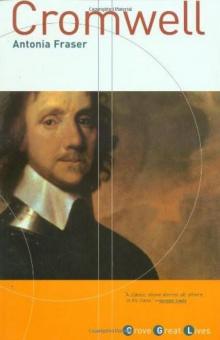 Cromwell
Cromwell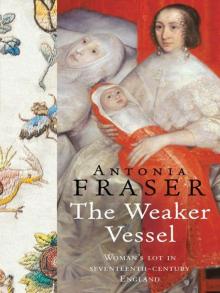 The Weaker Vessel: Women's Lot in Seventeenth-Century England
The Weaker Vessel: Women's Lot in Seventeenth-Century England Marie Antoinette: The Journey
Marie Antoinette: The Journey Oxford Blood
Oxford Blood Your Royal Hostage
Your Royal Hostage Cool Repentance
Cool Repentance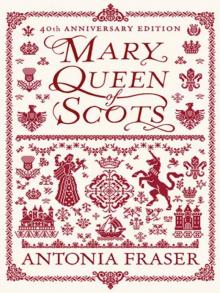 Mary Queen of Scots
Mary Queen of Scots Political Death
Political Death Royal Charles: Charles II and the Restoration
Royal Charles: Charles II and the Restoration My History: A Memoir of Growing Up
My History: A Memoir of Growing Up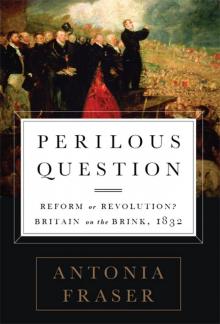 Perilous Question: Reform or Revolution? Britain on the Brink, 1832
Perilous Question: Reform or Revolution? Britain on the Brink, 1832 Jemima Shore at the Sunny Grave
Jemima Shore at the Sunny Grave A Splash of Red
A Splash of Red Must You Go?: My Life With Harold Pinter
Must You Go?: My Life With Harold Pinter Love and Louis XIV: The Women in the Life of the Sun King
Love and Louis XIV: The Women in the Life of the Sun King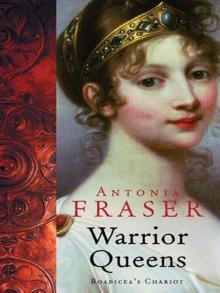 The Warrior Queens
The Warrior Queens The Wild Island
The Wild Island Quiet as a Nun
Quiet as a Nun Perilous Question
Perilous Question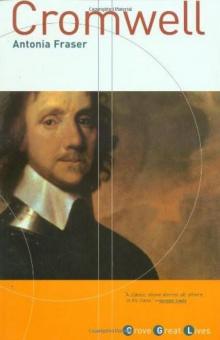 Cromwell, the Lord Protector
Cromwell, the Lord Protector Gunpowder Plots
Gunpowder Plots The Wild Island - Jemima Shore 02
The Wild Island - Jemima Shore 02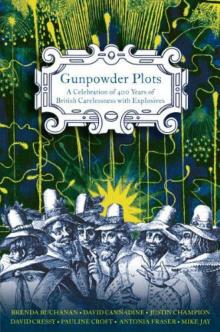 Gunpowder Plots: A Celebration of 400 Years of Bonfire Night
Gunpowder Plots: A Celebration of 400 Years of Bonfire Night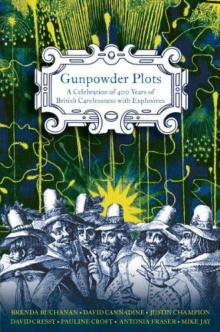 Gunpowder Plots_A Celebration of 400 Years of Bonfire Night
Gunpowder Plots_A Celebration of 400 Years of Bonfire Night Marie Antoinette
Marie Antoinette Must You Go?
Must You Go? My History
My History